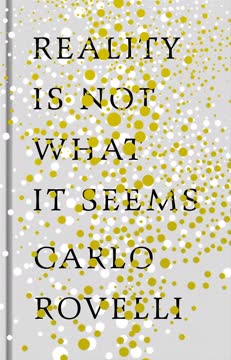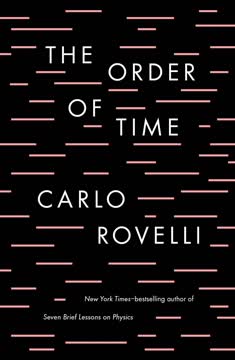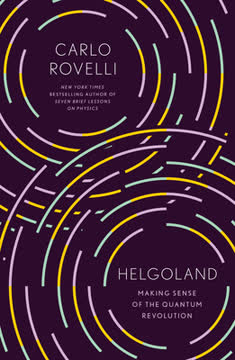Key Takeaways
1. Contemplating the Universe's End Reveals Profound Truths
Whether or not we subscribe to any particular religion or philosophy, it would be hard to deny that knowing our cosmic destiny must have some impact on how we think about our existence, or even how we live our lives.
Beyond human scale. While the end of our planet by the Sun's expansion is certain, cosmologists ponder a larger question: the end of the universe itself. This ultimate fate, unlike a planetary one, is final and inescapable for everything within it.
Eschatology's role. The study of the end, or eschatology, appears in many religious and philosophical traditions, often providing context or meaning to existence. Secular views range from nihilism to eternal recurrence, grappling with a cosmos potentially lacking a final redemption arc.
Science provides tools. Today, the question of the universe's fate is a scientific one, answerable through observation, mathematics, and physical evidence. Exploring these possibilities offers a glimpse into cutting-edge science and reframes humanity's place, finding a kind of joy even in the face of total destruction.
2. Looking Out into the Cosmos is Looking Back in Time
To a cosmologist, the past is not some unreachable lost realm.
Light takes time. The finite speed of light means everything we see is in the past. Looking at the Moon shows us a second ago, the Sun eight minutes ago, and distant galaxies billions of years ago. This inherent delay allows astronomers to observe the universe's evolution directly.
Cosmological principle. The universe is largely the same everywhere on large scales, meaning distant galaxies seen in the past reflect conditions here at that time. This principle allows us to learn about our own cosmic history by observing faraway objects.
Redshift as a clock. The expansion of the universe stretches light to lower frequencies (redshift). More distant galaxies are more redshifted, indicating they are moving away faster and are seen further back in time. Redshift thus serves as a proxy for distance and cosmic age.
3. The Universe Began with a Hot Big Bang
Every point in space in the universe today... every one of these points was, at the beginning of time, close enough to touch, and at that same first moment, rapidly tearing away from one another.
Expansion in reverse. Observing the universe's current expansion implies it was smaller, denser, and hotter in the past. Extrapolating backward leads to the concept of the Hot Big Bang, a state of extreme density and temperature everywhere.
Cosmic Microwave Background. The afterglow of this hot early phase is still detectable today as the CMB, a faint microwave hum coming from all directions. Its perfect blackbody spectrum confirms the universe was once extremely hot and dense.
Early universe history:
- Planck Time: The earliest moment (10^-43 seconds) where known physics breaks down.
- GUT Era: Forces potentially unified at extreme energies.
- Cosmic Inflation: A rapid expansion phase solving uniformity and fluctuation problems.
- Quark Era: Quarks and gluons existed freely in a plasma.
- Nucleosynthesis: Protons and neutrons fused into light atomic nuclei (H, He, Li).
- Surface of Last Scattering: Universe cooled enough for neutral atoms to form, allowing light (CMB) to travel freely.
4. Scenario 1: The Big Crunch - Gravity Could Reverse Expansion
If our universe were fated to someday suffer a Big Crunch, the first hint would be seen via just such an extrapolation.
Gravity's pull. The initial Big Bang expansion is opposed by the gravitational pull of all matter and energy in the universe. Whether expansion continues forever or reverses depends on the balance between this initial push and gravity's braking effect.
Signs of collapse. In a universe destined for a Big Crunch, expansion would slow, stop, and reverse. Distant galaxies would eventually appear blueshifted as they rush towards us. Nearby galaxies would approach faster and faster.
Cataclysmic end. As the universe contracts, galaxies collide more frequently, sparking star birth but also increasing violence. The cosmic microwave background blueshifts and intensifies, eventually incinerating stars from the outside in. The universe collapses into an unimaginably hot, dense state, potentially a singularity.
5. Scenario 2: Heat Death - Dark Energy Leads to a Cold, Empty Fade
A cosmological-constant-induced apocalypse is a slow and agonizing one, marked by increasing isolation, inexorable decay, and an eons-long fade into darkness.
Accelerated expansion. Observations in the late 1990s revealed the universe's expansion is accelerating, not slowing. This points to dark energy, a mysterious component with negative pressure, likely a cosmological constant woven into spacetime itself.
Isolation and decay. If dark energy is a cosmological constant, accelerated expansion continues forever. Distant galaxies recede beyond our observable horizon. Our local group becomes isolated. Stars burn out, black holes evaporate via Hawking radiation, and particles decay over vast timescales.
Maximum entropy. This scenario culminates in Heat Death, a state of maximum entropy. The universe becomes a cold, dark, empty expanse where energy is uniformly distributed. No organized structures can exist, and the arrow of time effectively ceases.
6. Scenario 3: The Big Rip - Phantom Dark Energy Tears Everything Apart
Not only would it be a kind of destruction from which there is no escape, quantum-mechanical fluctuation or not, it would be one that could tear apart the very fabric of reality, rendering any thinking creatures in the cosmos helpless as they watch their universe being ripped open around them.
Phantom dark energy. While a cosmological constant (equation of state w = -1) leads to Heat Death, dark energy with w < -1 (phantom dark energy) has a density that increases as space expands. This leads to an ever-increasing repulsive force.
Unraveling structures. If phantom dark energy exists, its accelerating push eventually overcomes all forces.
- Galaxy clusters are torn apart.
- Galaxies evaporate as stars drift away.
- Solar systems are unbound.
- Planets explode.
- Atoms and nuclei are ripped apart.
Finite time doom. Unlike Heat Death, the Big Rip occurs in a finite, calculable time. While current data suggests it's billions of years away, the difference between a safe universe and one headed for a Big Rip might be too small to measure precisely, leaving a terrifying possibility.
7. Scenario 4: Vacuum Decay - A Quantum Flaw Could Instantly Obliterate Reality
Our whole beautiful cosmos appears to be living on borrowed time.
Metastable vacuum. Particle physics, particularly the properties of the Higgs boson, suggests our current state of the universe (our "Higgs vacuum") might not be the lowest possible energy state. It could be a "false vacuum," clinging precariously to a higher energy level.
Quantum tunneling trigger. If a lower energy "true vacuum" exists, our false vacuum is unstable. A high-energy event, a black hole, or even a random quantum fluctuation could trigger a transition. This is like a pebble tunneling through a hill to reach a deeper valley.
Bubble of death. If triggered, a bubble of true vacuum forms and expands at nearly the speed of light. Inside, the laws of physics are drastically different, potentially making matter as we know it impossible. Anything in the bubble's path is instantly annihilated without warning.
8. Scenario 5: The Bounce - Our Universe Might Be Part of a Cycle
Whether or not we really live on a braneworld, and whether or not there are other branes out there across some higher-dimensional bulk, are still open questions.
Alternatives to inflation. Cyclic models propose the Big Bang wasn't the absolute beginning but a transition from a previous phase. These models, like the ekpyrotic scenario, offer alternatives to cosmic inflation for explaining the universe's properties.
Braneworld collisions. One version of the ekpyrotic model suggests our universe is a 3D "brane" in a higher-dimensional space. The Big Bang is caused by a collision with another brane, which then separate and contract back together for a new "bounce."
Entropy problem. Cyclic models can potentially address the low entropy state of the early universe, suggesting the order comes from the previous cycle. Newer models propose a scalar field drives contraction and bounce, potentially allowing information to pass between cycles.
9. Current Data Favors Heat Death, But Mysteries Remain
The problem with the Concordance Model is that the most important elements of it—dark matter, the cosmological constant, and inflation—are completely mysterious.
Concordance Model. The standard cosmological model (ΛCDM) describes the universe as dominated by dark energy (cosmological constant) and dark matter. This model fits current observations extremely well and predicts a Heat Death future.
Fundamental unknowns. Despite its success, the ΛCDM model relies on components we don't understand:
- Dark Matter: Its nature is unknown, only detected through gravity.
- Dark Energy: Its existence and constant value lack theoretical explanation.
- Inflation: The mechanism driving it is unknown, and direct evidence is elusive.
Hubble tension. A significant discrepancy exists between the universe's expansion rate (Hubble Constant) measured from the CMB (early universe) and from supernovae (late universe). This tension hints at potential flaws in the Concordance Model or requires new physics.
10. New Experiments and Theories Push the Frontiers of Understanding
Any time we’ve looked at the universe in a way that we haven’t before, we learn new stuff.
Observational tools. New telescopes and surveys are designed to probe dark energy and cosmic history with unprecedented precision.
- Vera C. Rubin Observatory (LSST): Will map billions of galaxies and millions of supernovae.
- James Webb Space Telescope (JWST), Euclid, WFIRST: Infrared telescopes to see distant, early galaxies.
- CMB Observatories: Using CMB lensing to map dark matter and structure growth.
- Gravitational Wave Detectors (LIGO, etc.): Observing black hole mergers and potentially primordial waves.
Particle physics search. Colliders like the LHC search for new particles and interactions beyond the Standard Model, which could shed light on dark matter, dark energy, and vacuum stability. Future colliders like the proposed FCC aim for higher energies to probe deeper physics.
Theoretical frontiers. Theorists explore radical ideas like spacetime not being fundamental, extra dimensions, and new formulations of quantum mechanics. These efforts aim to unify forces, solve tuning problems, and provide frameworks for understanding cosmic origins and ends.
11. Facing Cosmic Doom Changes Our Perspective on Life Now
It’s impossible to seriously contemplate the end of the universe without ultimately coming to terms with what it means for humanity.
Legacy's limits. In a universe with a finite end, any human legacy, no matter how grand, will eventually be erased. This can be a source of sadness or perspective, highlighting the transient nature of our existence on cosmic timescales.
Focus on the present. For many, the vastness of cosmic doom pales in comparison to immediate problems on Earth. The powerlessness to change the universe's fate can be freeing, shifting focus to what we can influence in our lifetimes.
The value of understanding. Even if knowledge is ultimately lost, the act of seeking and understanding the universe is inherently valuable. It changes who we are, provides a unique perspective, and allows us to appreciate the brief, vibrant period of cosmic history we inhabit.
Last updated:
Review Summary
The End of Everything (Astrophysically Speaking) is praised for its accessible explanation of complex astrophysics concepts, focusing on potential universe endings. Readers appreciate Mack's engaging writing style, humor, and ability to make difficult topics understandable. The book covers scenarios like Heat Death, Big Crunch, and Vacuum Decay. While some found certain sections challenging or repetitive, most reviewers enjoyed the journey through cosmic doom. The book is recommended for those interested in cosmology and astrophysics, offering a mix of scientific insight and philosophical contemplation.
Similar Books
Download PDF
Download EPUB
.epub digital book format is ideal for reading ebooks on phones, tablets, and e-readers.










